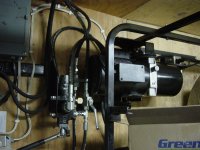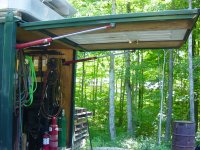Mark 42
New member
The top is pretty much like the sides. Many have depressions from handling - a corner of another container hit the roof of yours somewhere making a depression/dent/divot. Places like that will collect water. If no damaged areas like that on top, it will shed water.
I have an idea:
You could put some temporary support on the floor inside (e.g. railroad ties) to distribute the load... the use a hydraulic jack with a post to push up the center of the roof (and/or push out any dents) and make a slightly domed roof. Of course, you risk splitting a wall/roof seam if you push too hard, but as long as you don't overdo it, it seems viable.



